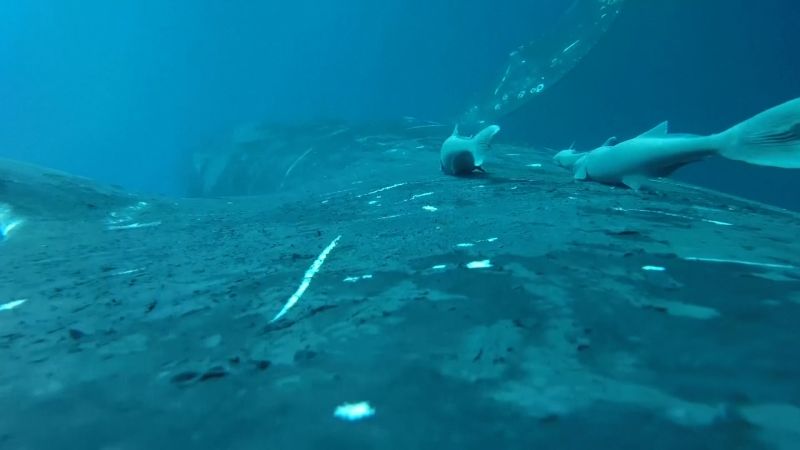
Scientists have recently documented extraordinary footage of remora fish engaging in a unique behavior known as whale-surfing. This remarkable phenomenon was captured off the coast of Queensland, Australia, where researchers have been studying the migration patterns of humpback whales. The footage reveals groups of these freeloading fish skillfully navigating away from their whale hosts just before the massive mammals breach the water’s surface.
The remora, also known as sucker fish, display remarkable agility as they momentarily detach from the whale, only to return with precision as the humpback dives back below. This behavior showcases their natural instincts and adaptability, as they cling to the whales while feeding on dead skin flakes and parasites.
Understanding the Remora’s Unique Lifestyle
Remora australis, the species observed in this study, has an adhesive plate on its head that allows it to create a vacuum seal on larger marine animals. This adaptation enables the fish to hitch a ride on various hosts, including whales and other large sea creatures, essentially using them as mobile platforms for breeding and feeding.
Olaf Meynecke, a marine scientist from the Whales and Climate Research Program at Griffith University, installed suction-cup cameras on humpback whales during their annual migration from icy Antarctic waters to the warmer Queensland coast. Although the primary goal was to study whale behavior, Meynecke’s cameras frequently captured the remoras photobombing the footage. “Whenever the whale was breaching and doing particularly fast movements, it appears that the sucker fish were responding very quickly to the movements,” Meynecke noted.
These observations illustrate the remora’s keen instincts, allowing them to time their detachment perfectly before a whale surfaces. The ability to return to the same spot shortly after showcases their adaptability and awareness of their environment.
The Mutual Relationship and Its Implications
The relationship between the remora and the humpback whale is generally considered mutually beneficial. The remoras feed on the whales’ dead skin and sea lice, while the whales benefit from the cleaning service provided by these hitchhikers. Despite this apparent harmony, Meynecke’s recordings suggest that some whales may find the presence of remoras bothersome.
“We’ve had individuals with high numbers of these remoras, and they were continually breaching without communicating with other whales,” he explained. “It appeared that they were trying to get rid of some of these remoras and checking whether they had fewer after breaching.”
The migratory patterns of the humpback whales cover approximately 10,000 km (about 6,000 miles), involving around 40,000 of these majestic mammals annually. As they journey from Antarctica to Queensland’s warm waters, questions remain about the fate of the remoras during this extensive migration.
Meynecke speculated that many remoras might detach at some point during the journey, possibly in temperate waters, and may seek out other large marine animals for shelter until the whales return. In the absence of their preferred hosts, remoras often attach themselves to other large creatures, including manta rays and even unsuspecting scuba divers.
“Much to the annoyance of the divers, of course,” Meynecke added. “They’re not easy to get rid of.”
This fascinating glimpse into the behavior of remoras and their interactions with humpback whales not only highlights the complexity of marine ecosystems but also raises further questions about the intricate relationships that exist beneath the ocean’s surface.







